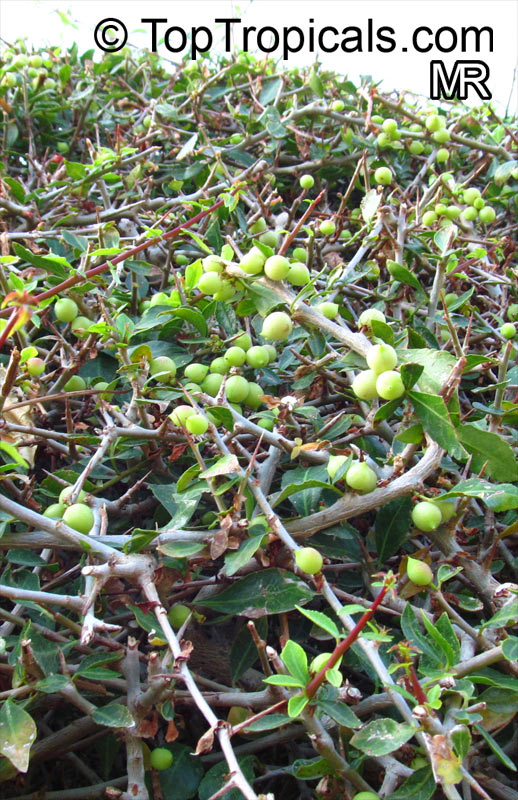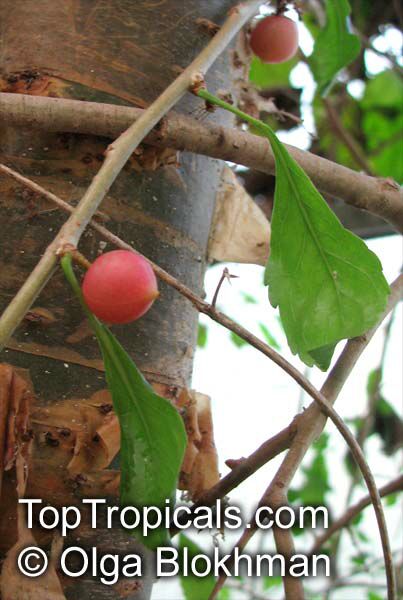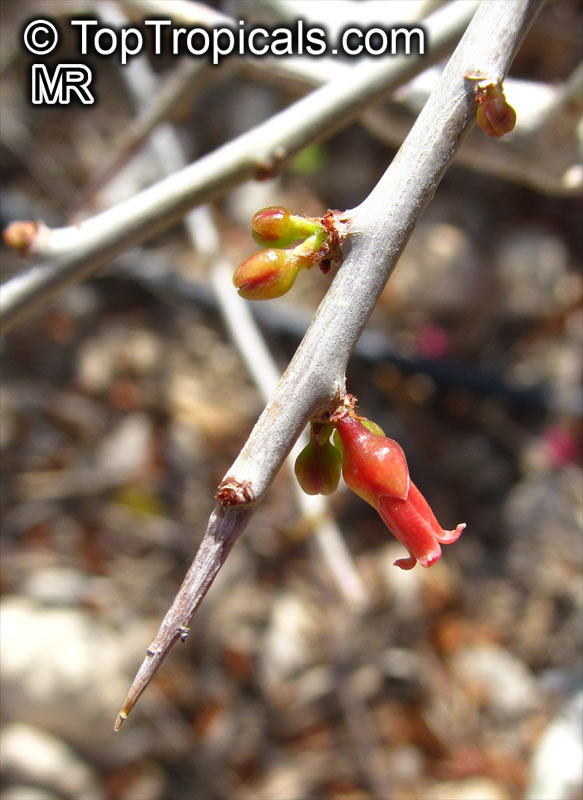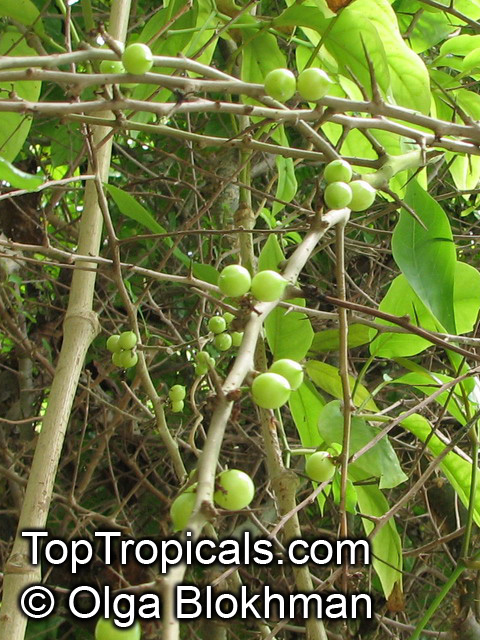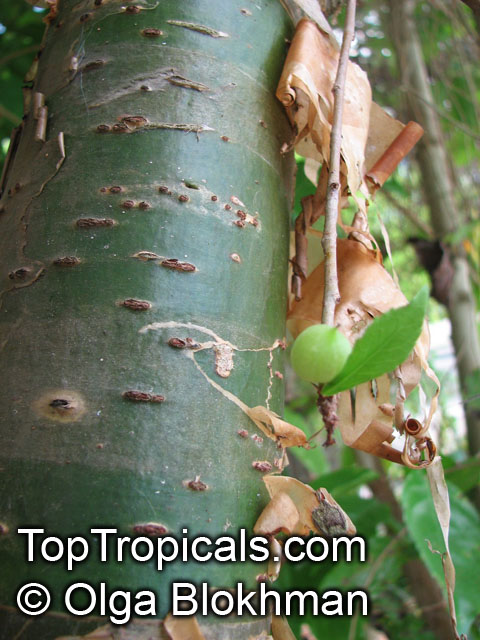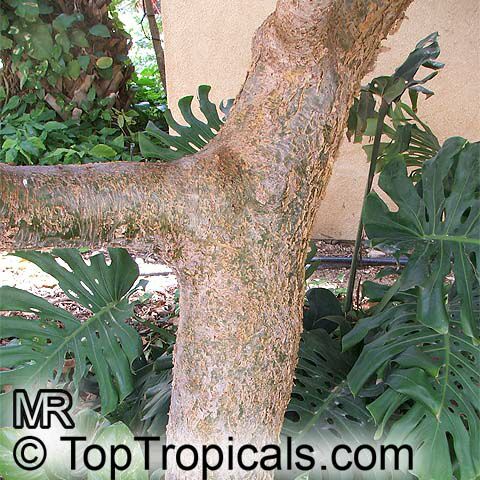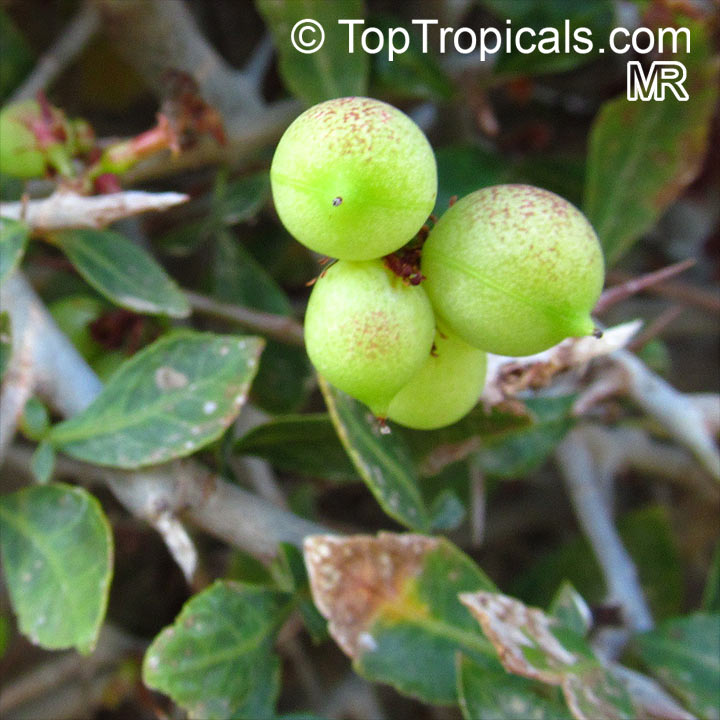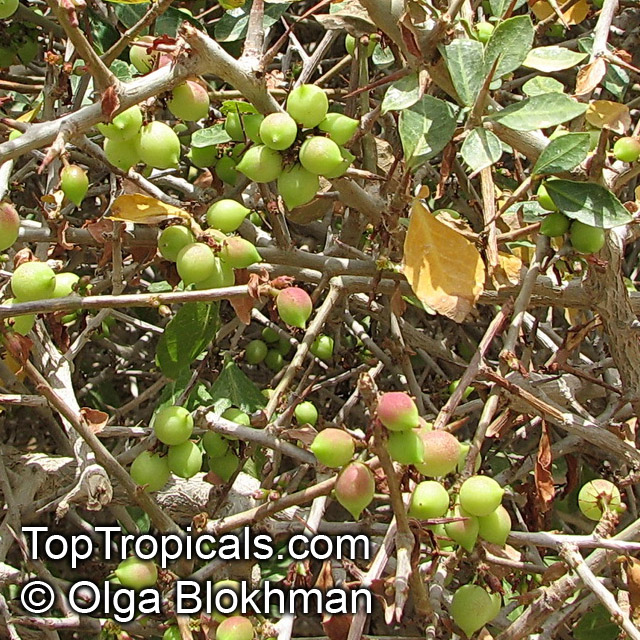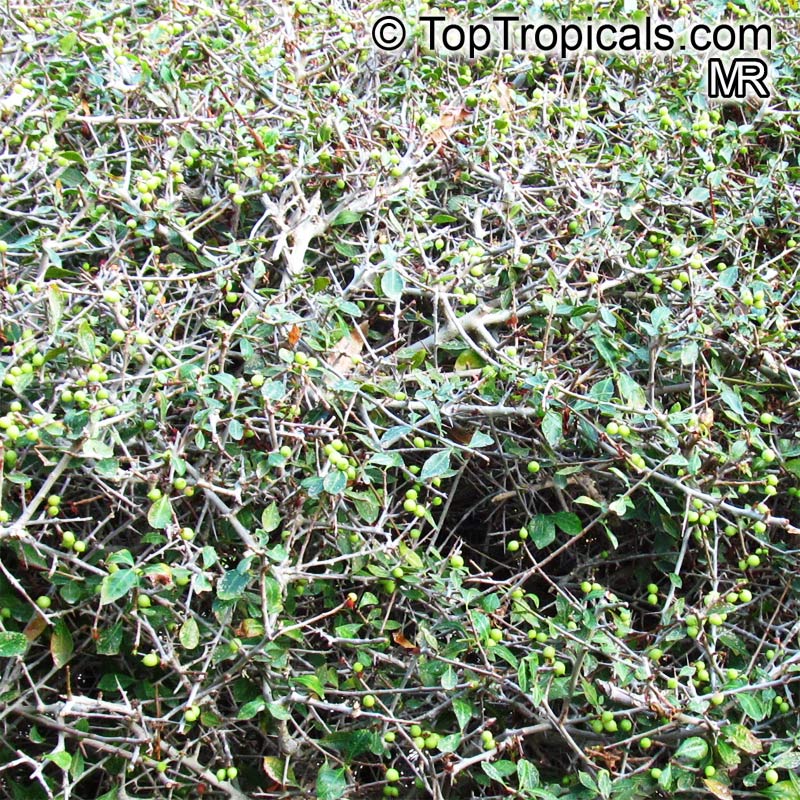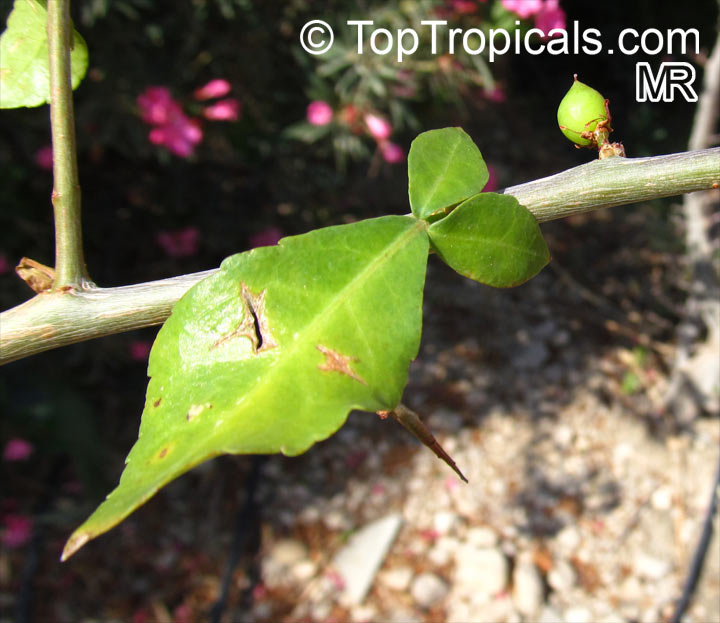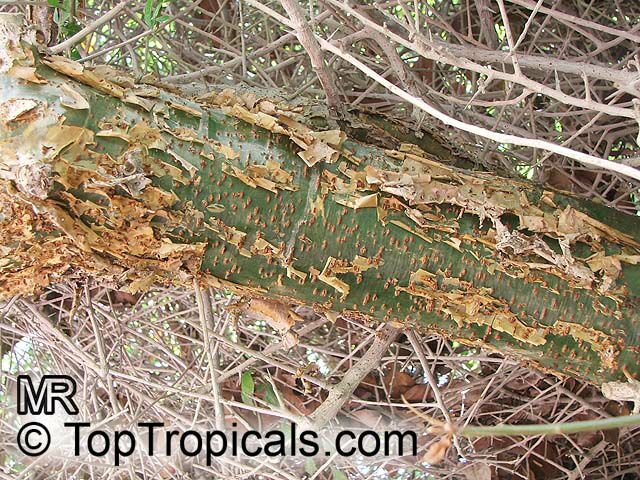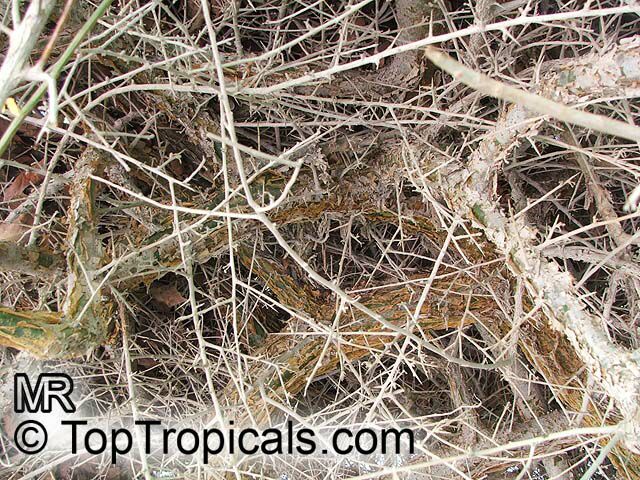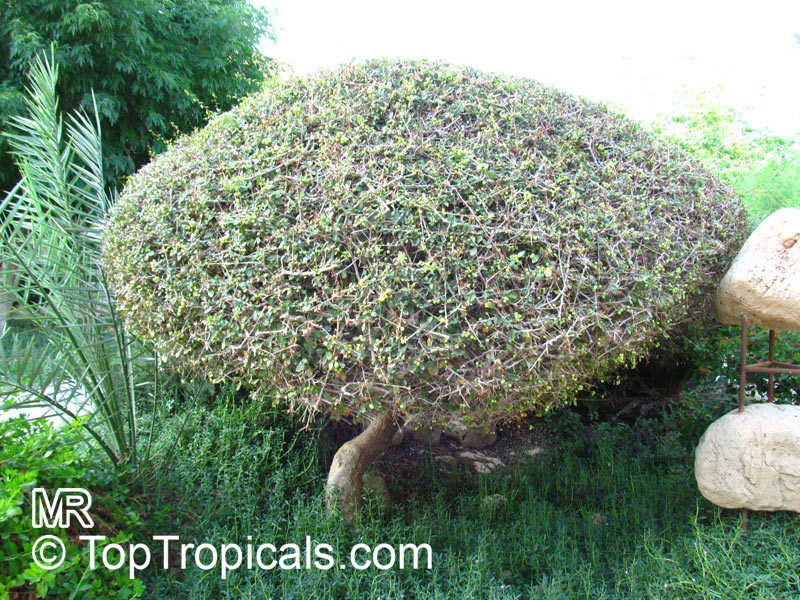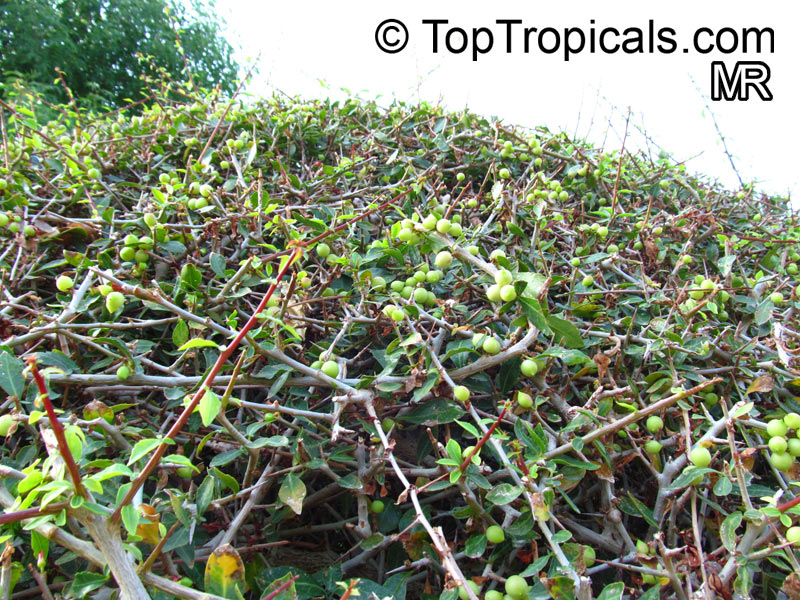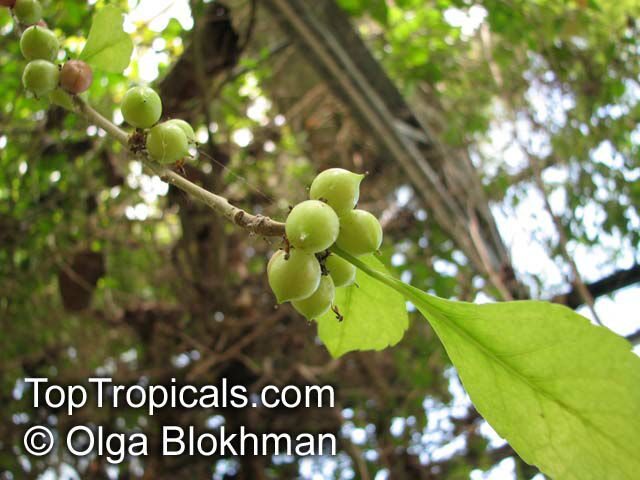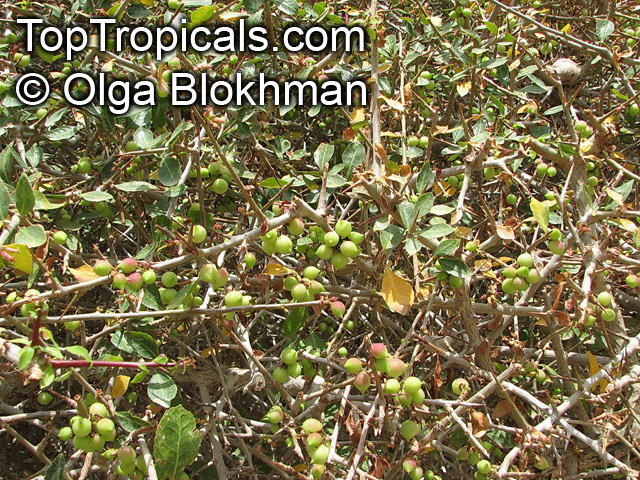Commiphora abyssinica (Myrrh Tree)
Top Tropicals Plant Encyclopedia
Botanical name: Commiphora abyssinica
Common name: Myrrh Tree
Family: Burseraceae
Origin: Northeast Africa







Myrrh trees (Commiphora abyssinica) are easily recognized for the fact that they typically grow 5 to 10 ft tall and have very spiny and/or thorny branches. The leaves are grey-green and the flowers are usually cream and small. The flowers develop into fruit that contains 3 seeds, have a strong fragrance, and have a yellowish-brown color. Myrrh trees prefer full sun and moderate water, and are hardy in USDA Zones 9-11.
This plant is well known for its usage in ethnomedical practices, such as its use as an antiseptic to treat wounds, or as an aromatherapy aid to relieve stress. It is also helpful in relieving respiratory problems and said to stimulate the libido. Myrrh is often found in natural products, ranging from incense sticks to toothpaste.
For growing myrrh trees in cold regions, it is best to plant them in large pots. The soil should be well draining, and the pot should have drainage holes in the bottom. When watering, make sure to water the plants deeply, but not too often. If watering is necessary, wait until the top inch of soil is dry. Fertilizing the soil twice a year with a balanced liquid fertilizer is recommended. Additionally, this species does well in warmer temperatures, so if possible, keep it in a warm spot indoors during the winter months.
Myrrh is referred to in the Bible. Myrrh was used as a wine preservative in the ancient world. It was used by Egyptians in embalming mixtures. It was also used as an aromatic for perfumes, funerals, and insect repellents.
